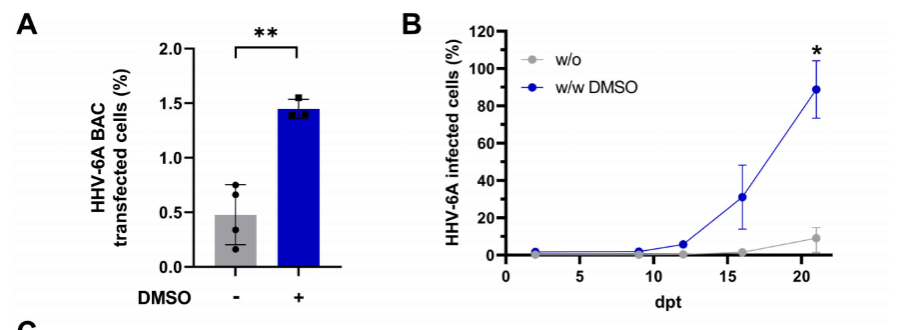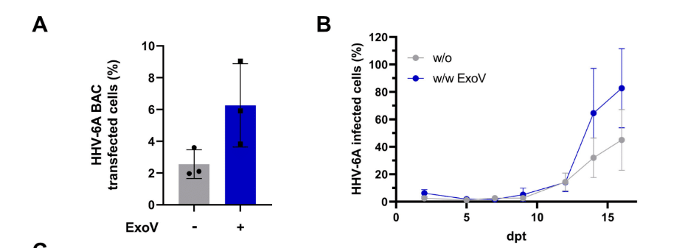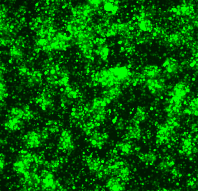Improving efficiency of reconstitution may aid in study of HHV-6 biology.
Bacterial artificial chromosome (BAC)-based reverse genetics systems are powerful tools for studying herpesvirus biology. They have contributed to understanding herpesvirus replication, pathogenesis, latency, and reactivation. However, reconstitution of infectious viruses has proved challenging and time consuming.
A team from the Institute of Virology and the Veterinary Centre for Resistance Research at the Freie Universität Berlin, led by Benedikt Kaufer, reports on how the use of various techniques can greatly increase the reconstitution of HHV-6A in T cells:
Transfection efficiency: Nucleoinfection efficiency previously has been low in T cells, especially with large BACs (e.g., 160 kbp). The team found that the efficiency of BAC transfections into JJHan T cells was greatly increased by pretreatment of the cells with DMSO, presumably by increasing the permeability of the cell membrane:

Quality and purity of the BAC DNA: Viral DNA being cloned into a BAC can be of poor quality and purity, compromising reconstitution. The team reports that it was able to reduce residual genomic or damaged DNA using ExoV digestion prior to cloning:

Slow replication of the virus: A variety of techniques known to increase viral replication were compared including several mitogens (TPA, PHA and IL-2), HDAC inhibitors (TSA and NaBut) and hydrocortisone. Individual mitogens or HDAC alone did not significantly increase replication rates. However, hydrocortisone alone or in combination with TPA did increase replication rates.
Slow reconstitution in BAC-infected bacteria: Combining PHA with HC, or TPA with HC, significantly increased the infection levels.
Other techniques for increasing reconstitution: The interferon response to viral infection, acting through the JAK/STAT pathway, discourages viral replication and reconstitution. The JAK1/JAK2 inhibitor, RUX, was shown to greatly increase replication and reconstitution; that effect was augmented by adding hydrocortisone to RUX:

Hypoxia/stabilizing HIF-1α. Hypoxia is known to stimulate the replication of KSHV and MDV. The investigators mimicked hypoxic conditions by stabilizing HIF-1α with several compounds (modulistat, deferoxamine, and IOX2). When these compounds were used alone, in combination with each other or in combination with hydrocortisone, they significantly increased virus replication.
This report should increase the value of using BAC technology to understand herpesvirus replication, pathogenesis, latency, and reactivation.
Read the full text: Reich 2024

